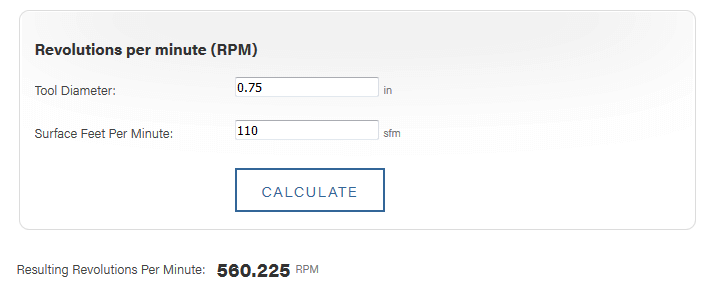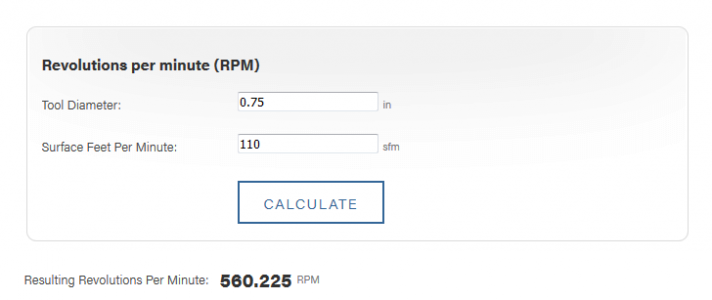Yeah, speeds for aluminum with smaller end mills will easily max out your speed so max out your speed and focus on feed. Personally, I prefer to feed manually with these smaller end mills so I can feel what the cutter is doing and this takes a bit of time to get right. When a cutter is working right, you will feel a slight resistance to the feed. As you feed in, you will feel the cutter contact and then you'll feel the resistance to the feed increase. You want to feed just enough to keep a slight positive contact with the material as it cuts. Harder to describe than to do but it is important because this works for ALL cutters for ALL manual feeds, either on the mill or lathe. You are looking for a slight resistance to the feed, and then you have to maintain it throughout the entire cut. Get it right and the tool will cut efficiently and accurately; push it and the tool will deflect.
The other thing I meant to mention is that using cheap end mills is false economy. Cheap end mills do not cut well, they do not last and they make learning to use an end mill much harder. I highly recommend you buy a good high helix 3 flute roughing and finishing end mill from a good maker when working with aluminum. I much prefer Niagara Cutter end mills over all others; they work, they last and they are accurate. My current Niagara 3/8" high helix coarse pitch rougher for aluminum has to be over 10 years old now and is still going strong. My Brubaker high helix finishing end mill is well over 5 years old and still cuts like new. My point is that it pays to buy good end mills appropriate for the material you have and then learn to use them properly.
Good makes include Niagara Cutter, Brubaker, Melin, Regal Beloit, OSG, Putnam, Titex. There are others. Note that Shars, Harbor Freight and LMS are not on this list.
Always buy new end mills, even on ebay. Do not buy used end mills unless you can sharpen end mills properly, including the hook at the tips.
Limit the size of your end mills to sizes your mill can handle. Again, 3/8" to maybe 1/2" would be the max. Quite often, you can save money by buying off sized end mills. The vast majority of the time you can use a slightly smaller end mill and just cut a slot to size by moving your X-Y coordinates. For profiling, the exact size of the end mill doesn't matter.
The number of flutes impacts on chip clearance and feed rates. In slots, go with 2-3 flutes to clear chips better; for profiling, more flutes produce a better finish and allow you to feed faster. In slots, use a low pressure stream of air to clear chips so the edges of your cutter are not doing a lot of re-cutting; you will be surprised at how much longer your end mills will last.
Lubricants matter. WD-40 works well for aluminum and is cheap. A mister system works best to lube and blow chips clear but a brush and blow gun works almost as well. For steels, any good cutting fluid will work and air is just as useful.
Give it some time and things will work out. You have a little mill so you have to determine what it takes to use it. Much of the information on the net and the forums does not apply because you just don't have the power, rigidity and mass BUT that doesn't mean you can't do the work; it will just take a bit more time and finesse. I use my Sherline a LOT, even though I have a larger mill that is orders of magnitude bigger; the Sherline is just easier to use, more precise and has variable speed so I can dial in my cuts. You would be surprised at what a tiny Sherline mill can do in the right hands. The same will be true for your LMS 3990 once you figure out how to use it.





